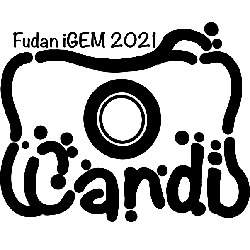Difference between revisions of "Part:BBa K3790232"
(→Usage and Biology) |
(→Experimental Results) |
||
| Line 35: | Line 35: | ||
In contrast, gp5.7 can effectively inhibit almost all the transcription during platform stage, during which the density of cells has reached the up-limit. This can lead to purer and larger amount of protein of interest in the lysate. | In contrast, gp5.7 can effectively inhibit almost all the transcription during platform stage, during which the density of cells has reached the up-limit. This can lead to purer and larger amount of protein of interest in the lysate. | ||
| − | === | + | ===Design=== |
| − | + | ||
===Reference=== | ===Reference=== | ||
Revision as of 19:58, 21 October 2021
T7 gene product 5.7 driven by pBAD/araC
Introduction
In order to turn the host bacteria into ‘factories’ that concentrate on manufacturing parts of the virus, some phages have the ability to shut off the endogenous transcription of host bacteria. As for T7 phage, there’re three gene products collaboratively realizing the function, which are gp0.7, gp2 and gp5.7.
Gp0.7 and gp2 are early phage genes, which means they are transcribed by the hosts’ RNA polymerase at the very beginning of the infection process. Gp0.7 is a protein kinase without strong specificity. Some said that since it can phosphorylate RNAP of E.coli., it can somehow help inhibit the transcription, while others mentioned that there might be other mechanism. In general, the function of gp0.7 is complicated and not well studied yet. It can interfere with transcription somehow, but the effect is not notable enough.
Gp2 is a small protein that can bind to both the 1.1 domain of σ70 factor and the β’ subunit of the host’s RNAP, thus inhibiting the transcription initiated by σ70-RNAP complex very effectively.
However, in stressful conditions, such as platform stage, E.coli. will mainly use σS factors to initiate transcription, which makes gp2 less effective to shut off transcription. Therefore, gp5.7 is needed for phage to infect E.coli. in stationary phase of growth. Gp5.7 is coded by a mid-stage phage gene. It can bind to σS factors and RNAPs of E.coli. in order to inhibit the transcription initiated by σS-RNAP complex.
Usage and Biology
Flexible growth inhibition
σS factors are typically responsible for genes concerning adaption to suboptimal growth conditions, and only take dominance when the environment is stressful. However, σS factors actually exist at any condition (it’s the matter of amount), and are essential for cell growth. In E.coli. genome, some genes essential to biofilm formation and metabolism are regulated by σS factors. Therefore, by inhibiting the transcription initiated by σS-RNAP complex, though not as effectively as gp2, gp5.7 can also hinder cell growth. Thanks to its lack of effectiveness, not like gp2, gp5.7’s effect on inhibiting cell growth is notably related to its expression amount, and thus can be more freely controlled by way of induction.
Expression regulation
Gp5.7 can effectively inhibit σS promoters, thus showing the potential to serve as an expression regulator in gene circuits. It has an advantage that this regulation system can work based on an independent σS promoter, not relying on other protein binding region on DNA sequence. That means you can freely add other regulating elements to this system and make it regulated by several factors. This feature is important in design of highly complex logical gene circuits. We believe that expression regulation system using gp5.7 can be very useful in the field of synthetic biology.
Make your protein of interest denser and purer
In our project, our aim is to directly use E.coli. lysate to realize LAMP reaction catalyzed by Bst DNA polymerase in an efficient way, by which we can save the cost typically spent for protein purification and the storage of purified proteins. The major problem concerning this idea is that, there’re many irrelevant proteins in the cytoplasm which may influence the activity of Bst enzyme. So, we want our protein of interest purer in the lysate. One way to make this happen is to inhibit the expression of all the other proteins except the protein of interest.
By using gp2, we can easily inhibit the expression of most of the proteins in E.coli., but the expression of gp2 must happen during exponential stage, since only during this stage are σ70 factors responsible for almost all of the transcription. However, expression of gp2 will immediately stop the growth of the bacteria, making the density of cells very low. That will lead to low density of protein of interest in the lysate, which will also decrease the activity of the enzyme.
In contrast, gp5.7 can effectively inhibit almost all the transcription during platform stage, during which the density of cells has reached the up-limit. This can lead to purer and larger amount of protein of interest in the lysate.
Design
Reference
Sequence and Features
- 10COMPATIBLE WITH RFC[10]
- 12INCOMPATIBLE WITH RFC[12]Illegal NheI site found at 1205
- 21INCOMPATIBLE WITH RFC[21]Illegal BamHI site found at 1144
- 23COMPATIBLE WITH RFC[23]
- 25INCOMPATIBLE WITH RFC[25]Illegal AgeI site found at 979
- 1000INCOMPATIBLE WITH RFC[1000]Illegal SapI site found at 961

